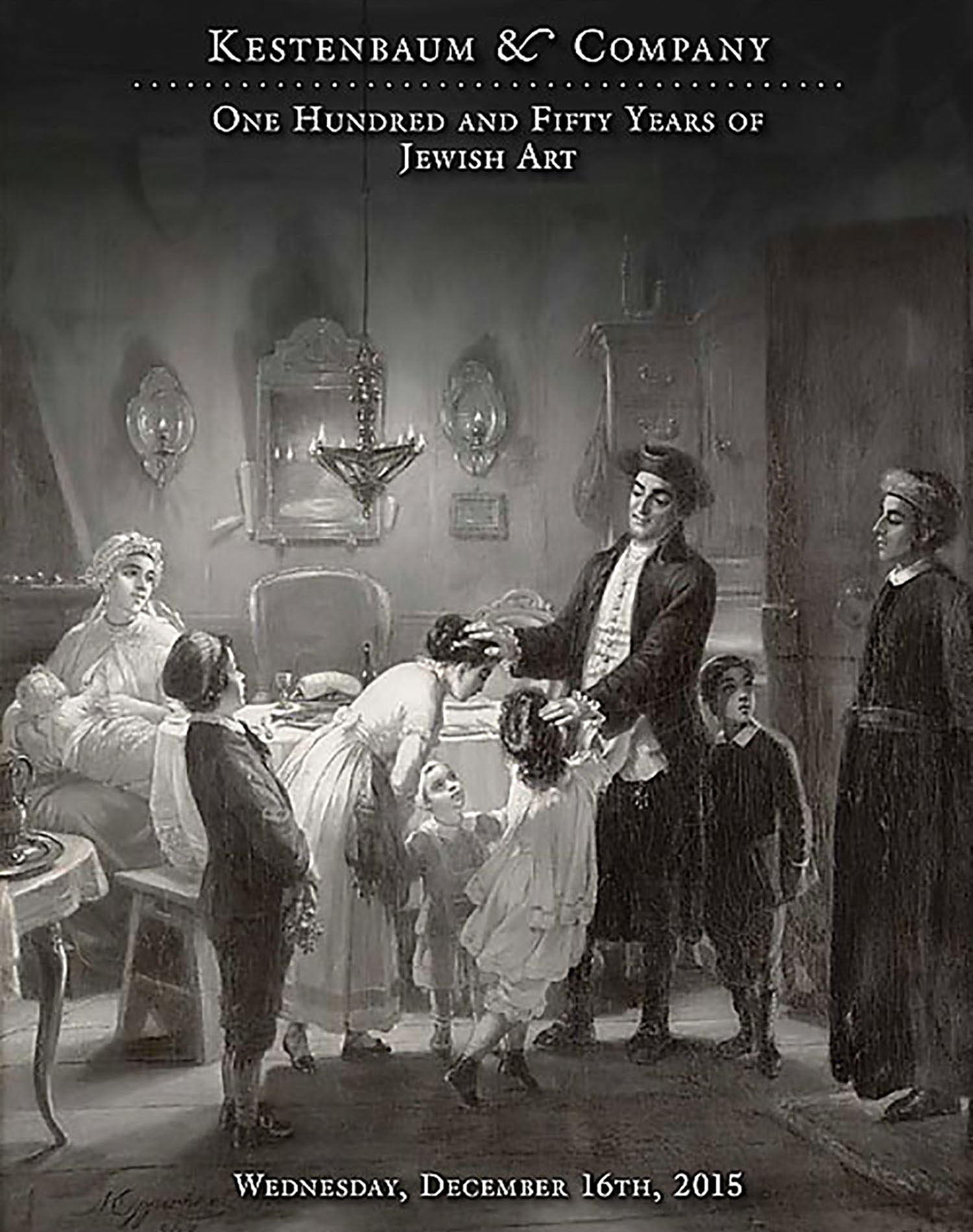The Portuguese Synagogue, Amsterdam.

AUCTION 67 |
Wednesday, December 16th,
2015 at 1:00
One Hundred and Fifty Years of Jewish Art
Lot 3
(AMSTERDAM SYNAGOGUE).
The Portuguese Synagogue, Amsterdam.
c. 1700:
Est: $20,000 - $25,000
PRICE REALIZED $26,000
Erected amidst much celebration in 1675, the Portuguese Synagogue (known in Ladino as the Esnoga) was the wealthiest Jewish house of worship in Amsterdam, a reflection of the role many of its powerful congregants played in realizing the Dutch Golden Age.
The Dutch perspective artist, Emanuel de Witte (1617-92) painted a grand interior of the Portuguese Synagogue in 1680 which currently hangs in the Rijksmuseum, Amsterdam.
In our painting the male members of the congregation, dispersed around the central bimah-podium and costumed in 17th-century ruff collars, appear with darkened skin-tones - likely a reference to the congregants’ Iberian roots. The anonymous artist has also added intriguing flights of fancy to the synagogue interior: The Torah Reader is adorned in a most unusual prayer-shawl - a floral silk damask hooded cape. The Torah scroll he raises is remarkably thin, comprised of just one membrane of vellum and with the Decalogue listed in Roman numerals. An element that bears no relation to a synagogue is the large, garlanded bucranium (or ox skull) affixed to the Torah podium. This neo-Classical design element was associated with ancient Roman temple architecture, and is famously found on the altar Ara Pacis Augustae (13 BCE).
A remarkably similar painting to ours, dated c. 1700, was sold at Sotheby’s Tel Aviv (April 12th, 1996, lot 215). A notable difference, being the presence of a brass Judenstern lamp - a ritual object found in a German, or Eastern European setting. This would explain Sotheby’s seemingly erroneous attribution to the Aschkenaz Synagogue of Amsterdam. Due to the absence of this star-shaped lamp in the present painting, one may assume our example was executed first.
